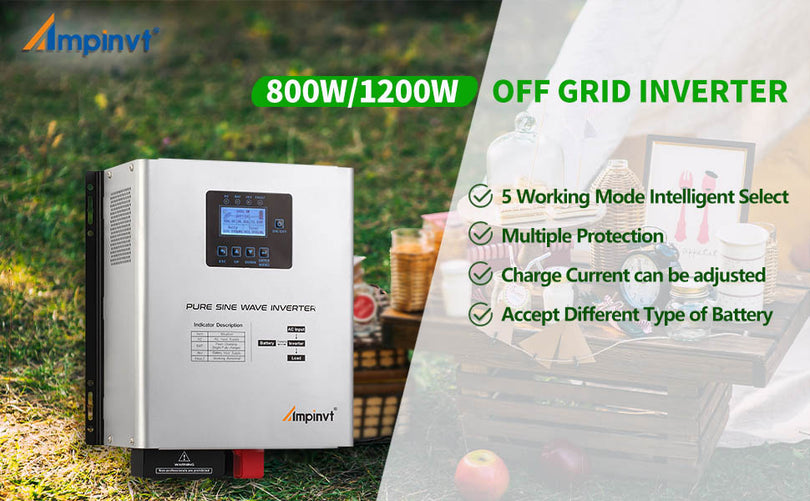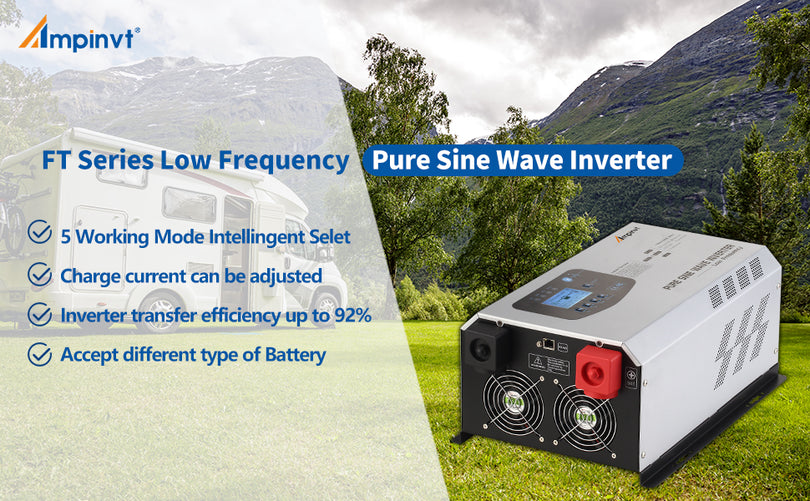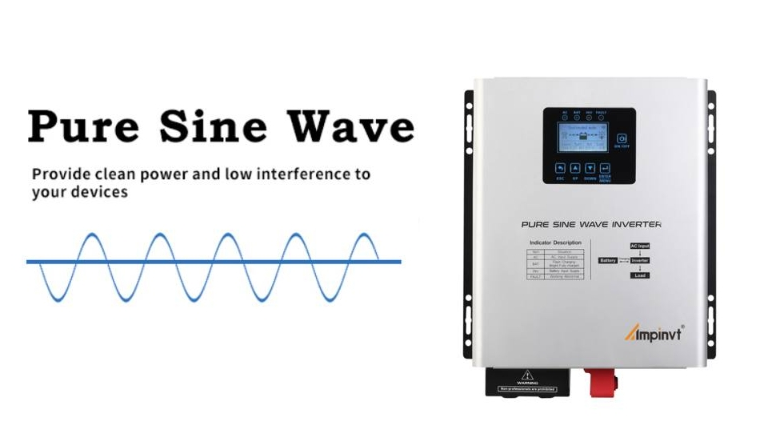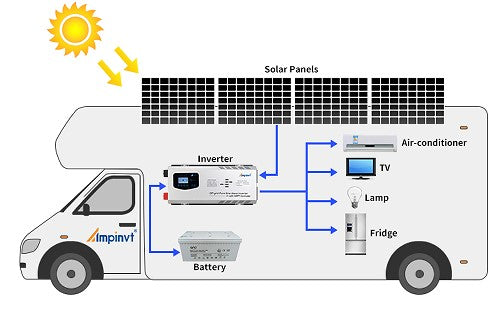According to the properties of the wave string, there are two main types: one is pure sine wave inverters, and the other is square wave inverters. The sine wave inverter outputs pure sine wave AC power that is the same or even better as the power grid we use daily, because it does not contain electromagnetic pollution in the power grid.
The output of the square wave inverter is poor quality square wave AC power, and its maximum positive value to maximum negative value are almost generated simultaneously, which causes severe unstable effects on the load and the inverter itself. At the same time, its load capacity is poor, only 40-60% of the rated load, and cannot carry inductive loads. If the load carried is too large, the third harmonic component contained in the square wave current will increase the capacitive current flowing into the load, and in severe cases, it will damage the power filter capacitor of the load.
In response to the above shortcomings, quasi sine wave (also known as improved sine wave, modified sine wave, simulated sine wave, etc.) inverters have emerged in recent years. The output waveform has a time interval from the maximum positive value to the maximum negative value, and the usage effect has been improved. However, the waveform of quasi sine wave is still composed of broken lines and belongs to the category of square wave, with poor continuity.
Overall, pure sine wave inverters provide high-quality AC power and can drive any type of load, but with high technical requirements and costs. Sine wave inverters can meet most of our electricity needs, with high efficiency, low noise, and moderate prices, making them the mainstream product in the market. The production of square wave inverters uses simple multi harmonic oscillators, which belong to the level of the 1950s and will gradually withdraw from the market.
A pure sine wave inverter is a power inverter that mimics the output voltage waveform of an AC power source connected to the grid. It provides clean and stable power with minimal harmonic distortion. It can handle any kind of equipment without causing harm to them.
It keeps the voltage around 110V/230V, which avoids any power fluctuations or outages.
There are several advantages when you use a pure sine wave inverter.
A pure sine wave inverter has several advantages over a modified sine wave inverter:
- It provides cleaner, smoother power with low harmonic distortion, which prevents interference and damage to sensitive equipment.
- It is so versatile that as long as household AC power can drive a device, a sine wave inverter can drive it.
- It can work with all types of equipment, including capacitive and inductive loads, without degrading their performance or life.
- It is highly efficient and low noise, saving energy and reducing environmental impact.
- The sine wave inverter is powerful and easy to maintain.
- It has a reasonable price compared to other types of inverters.
- Their AC output power is more stable and consistent.
- They typically consume less power than modified sine wave inverters, which means they can be used to power small appliances without the need for increased battery size or generator output.
- They also produce very little interference and noise, making them ideal for sensitive equipment in medical and industrial environments.




